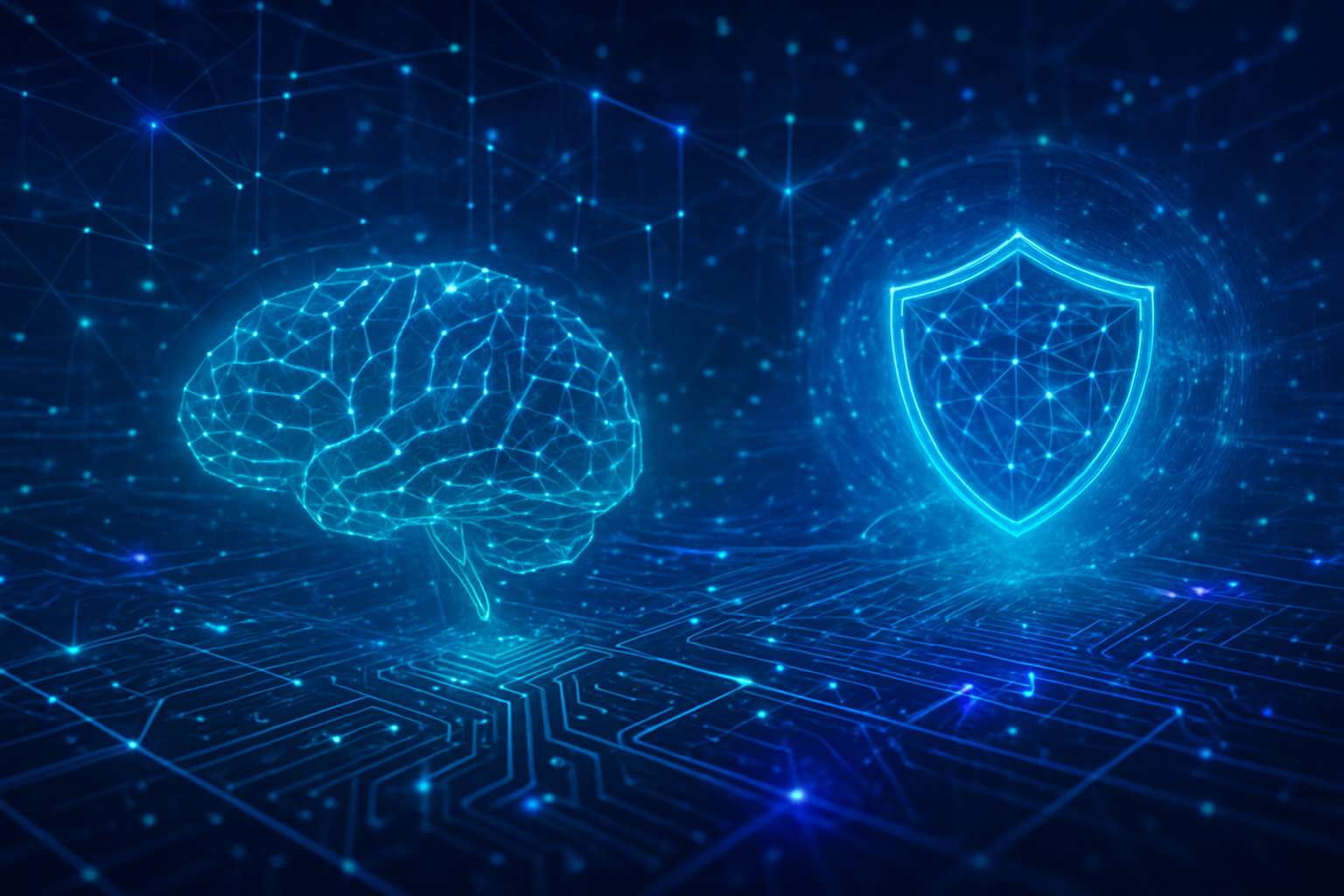Concerns are mounting across financial markets regarding a potential "AI bubble," as sky-high valuations for technology companies, particularly those focused on artificial intelligence, trigger comparisons to past speculative frenzies. This apprehension is influencing market sentiment, leading to significant volatility and a re-evaluation of investment strategies. While the transformative power of AI is undeniable, the sustainability of current market valuations is increasingly under scrutiny, with some experts warning of an impending correction.
Amidst these jitters, a notable development on November 21, 2025, saw pharmaceutical giant Eli Lilly (NYSE: LLY) briefly touch and then officially join the exclusive $1 trillion market capitalization club. While this milestone underscores broader market exuberance, it is crucial to note that Eli Lilly's unprecedented growth is overwhelmingly attributed to its dominance in the GLP-1 (glucagon-like peptide-1) drug market, driven by its blockbuster diabetes and weight-loss medications, Mounjaro and Zepbound, rather than direct AI-driven sentiment. This distinction highlights a divergence in market drivers, even as the overarching discussion about inflated valuations continues to dominate headlines.
Technical Foundations and Market Parallels: Decoding AI's Valuation Surge
The current surge in AI market valuations is fundamentally driven by a rapid succession of technical breakthroughs and their profound application across industries. At its core, the AI boom is powered by an insatiable demand for advanced computing power and infrastructure, with Graphics Processing Units (GPUs) and specialized AI chips from companies like Nvidia (NASDAQ: NVDA) forming the bedrock of AI training and inference. This has ignited a massive infrastructure build-out, channeling billions into data centers and networking. Complementing this are sophisticated algorithms and machine learning models, particularly the rise of generative AI and large language models (LLMs), which can process vast data, generate human-like content, and automate complex tasks, fueling investor confidence in AI's transformative potential. The ubiquitous availability of big data and the scalability of cloud computing platforms (such as Amazon Web Services (NASDAQ: AMZN), Microsoft Azure (NASDAQ: MSFT), and Google Cloud (NASDAQ: GOOGL)) provide the essential fuel and infrastructure for AI development and deployment, enabling organizations to efficiently manage AI applications.
Furthermore, AI's promise of increased efficiency, productivity, and new business models is a significant draw. From optimizing advertising (Meta Platforms (NASDAQ: META)) to enhancing customer service and accelerating scientific discovery, AI applications are delivering measurable benefits and driving revenue growth. McKinsey estimates generative AI alone could add trillions in value annually. Companies are also investing heavily in AI for strategic importance and competitive edge, fearing that inaction could lead to obsolescence. This translates into market capitalization through the expectation of future earnings potential, the value of intangible assets like proprietary datasets and model architectures, and strategic market leadership.
While the excitement around AI frequently draws parallels to the dot-com bubble of the late 1990s, several technical and fundamental differences are noteworthy. Unlike the dot-com era, where many internet startups lacked proven business models and operated at heavy losses, many leading AI players today, including Nvidia, Microsoft, and Google, are established, profitable entities with robust revenue streams. Today's AI boom is also heavily capital expenditure-driven, with substantial investments in tangible physical infrastructure, contrasting with the more speculative ventures of the dot-com period. While AI valuations are high, they are generally not at the extreme price-to-earnings (P/E) ratios seen during the dot-com peak, and investors are showing a more nuanced focus on earnings growth. Moreover, AI is already deeply integrated across various industries, providing real-world utility unlike the nascent internet adoption in 2000. However, some bubble-like characteristics persist, particularly among younger AI startups with soaring valuations but little to no revenue, often fueled by intense venture capital investment.
Crucially, Eli Lilly's $1 trillion valuation on November 21, 2025, stands as a stark contrast. This milestone is overwhelmingly attributed to the groundbreaking success and immense market potential of its GLP-1 receptor agonist drugs, Mounjaro and Zepbound. These medications, targeting the massive and growing markets for type 2 diabetes and weight loss, have demonstrated significant clinical efficacy, safety, and are backed by robust clinical trial data. Eli Lilly's valuation reflects the commercial success and future sales projections of this clinically proven pharmaceutical portfolio, driven by tangible product demand and a large addressable market, rather than speculative bets on AI advancements within its R&D processes.
Shifting Tides: Impact on AI Companies, Tech Giants, and Startups
The burgeoning "AI bubble" concerns and the soaring valuations of AI companies are creating a dynamic and often volatile landscape across the tech ecosystem. This environment presents both immense opportunities and significant risks, heavily influenced by investor sentiment and massive capital expenditures.
For AI startups, the current climate is a double-edged sword. Beneficiaries are those possessing unique, proprietary datasets, sophisticated algorithms, strong network effects, and clear pathways to monetization. These deeptech AI companies are attracting significant funding and commanding higher valuations, with AI-powered simulations reducing technical risks. However, many AI startups face immense capital requirements, high burn rates, and struggles to achieve product-market fit. Despite record funding inflows, a significant portion has flowed to a few mega-companies, leaving smaller players to contend with intense competition and a higher risk of failure. Concerns about "zombiecorns"—startups with high valuations but poor revenue growth—are also on the rise, with some AI startups already ceasing operations in 2025 due to lack of investor interest or poor product-market fit.
Tech giants, including Alphabet (NASDAQ: GOOGL), Microsoft (NASDAQ: MSFT), Amazon (NASDAQ: AMZN), Meta Platforms (NASDAQ: META), and Nvidia (NASDAQ: NVDA), are at the forefront of this "AI arms race." Companies with strong fundamentals and diversified revenue streams, particularly Nvidia with its specialized chips, are significant beneficiaries, leveraging vast resources to build advanced data centers and consolidate market leadership. However, the unprecedented concentration of market value in these "Magnificent 7" tech giants, largely AI-driven, also poses a systemic risk. If these behemoths face a significant correction, the ripple effects could be substantial. Tech giants are increasingly funding AI initiatives through public debt, raising concerns about market absorption and the sustainability of such large capital expenditures without guaranteed returns. Even Google CEO Sundar Pichai has acknowledged that no company would be immune if an AI bubble were to burst.
The competitive implications for major AI labs are intense, with a fierce race among players like Google (Gemini 3 Pro), OpenAI (GPT-5), Anthropic (Claude 4.5), and xAI (Grok-4.1) to achieve superior performance. This competition is driving significant capital expenditures, with tech companies pouring billions into AI development to gain strategic advantages in cloud AI capabilities and infrastructure. AI is also proving to be a fundamentally disruptive technology, transforming industries from healthcare (diagnostics, personalized medicine) and finance (robo-advisors) to manufacturing (predictive maintenance) and customer service. It enables new business models, automates labor-intensive processes, and enhances efficiency, though some businesses that rushed to replace human staff with AI have had to rehire, indicating that immediate efficiency gains are not always guaranteed. In terms of market positioning, competitive advantage is shifting towards companies with proprietary data, AI-native architectures, and the ability to leverage AI for speed, scale, and personalization. A robust data strategy and addressing the AI talent gap are crucial. Broader market sentiment, characterized by a mix of exuberance and caution, will heavily influence these trends, with a potential investor rotation towards more defensive sectors if bubble concerns intensify.
The Broader Canvas: AI's Place in History and Societal Implications
The ongoing discussion around an "AI bubble" signifies a pivotal moment in AI history, resonating with echoes of past technological cycles while simultaneously charting new territory. The theorized 'AI bubble' is a significant concern for global investors, leading some to shift away from concentrated U.S. tech investments, as the "Magnificent 7" now account for a record 37% of the S&P 500's total value. Economists note that current investment in the AI sector is 17 times that poured into internet companies before the dot-com bubble burst, with many AI companies yet to demonstrate tangible profit improvements. If the market's reliance on these dominant companies proves unsustainable, the fallout could be severe, triggering a widespread market correction and influencing broader industry trends, regulatory frameworks, and geopolitical dynamics.
This period is widely characterized as an "AI spring," marked by rapid advancements, particularly in generative AI, large language models, and scientific breakthroughs like protein folding prediction. Organizations are increasingly adopting AI, with 88% reporting regular use in at least one business function, though many are still in piloting or experimenting stages. Key trends include the proliferation of generative AI applications, multimodal AI, AI-driven healthcare, and a growing demand for explainable AI. The sheer scale of investment in AI infrastructure, with major tech companies pouring hundreds of billions of dollars into data centers and compute power, signals a profound and lasting shift.
However, concerns about overvaluation have already led to market volatility and instances of AI-related stock prices plummeting. The perceived "circular financing" among leading AI tech firms, where investments flow between companies that are also customers, raises questions about the true profitability and cash flow, potentially artificially inflating valuations. An August 2025 MIT report, indicating that 95% of 300 surveyed enterprise AI investments yielded "zero return," underscores a potential disconnect between investment and tangible value. This concentration of capital in a few top AI startups fosters a "winner-takes-all" dynamic, potentially marginalizing smaller innovators. Conversely, proponents argue that the current AI boom is built on stronger fundamentals than past bubbles, citing strong profitability and disciplined capital allocation among today's technology leaders. A market correction, if it occurs, could lead to a more rational approach to AI investing, shifting focus from speculative growth to companies demonstrating clear revenue generation and sustainable business models. Interestingly, some suggest a burst could even spur academic innovation, with AI talent potentially migrating from industry to academia to conduct high-quality research.
The ethical and societal implications of AI are already a major global concern, and a market correction could intensify calls for greater transparency, stricter financial reporting, and anti-trust scrutiny. Overvaluation can exacerbate issues like bias and discrimination in AI systems, privacy and data security risks from extensive data use, and the lack of algorithmic transparency. The potential for job displacement due to AI automation, the misuse of AI for cyberattacks or deepfakes, and the significant environmental impact of energy-intensive AI infrastructure are all pressing challenges that become more critical under the shadow of a potential bubble.
Comparisons to previous "AI winters"—periods of reduced funding following overhyped promises—are frequent, particularly to the mid-1970s and late 1980s/early 90s. The most common parallel, however, remains the dot-com bubble of the late 1990s, with critics pointing to inflated price-to-earnings ratios for some AI firms. Yet, proponents emphasize the fundamental differences: today's leading tech companies are profitable, and investment in AI infrastructure is driven by real demand, not just speculation. Some economists even suggest that historical bubbles ultimately finance essential infrastructure for subsequent technological eras, a pattern that might repeat with AI.
The Road Ahead: Navigating AI's Future Landscape
The future of AI, shaped by the current market dynamics, promises both unprecedented advancements and significant challenges. In the near-term (2025-2026), we can expect AI agents to become increasingly prevalent, acting as digital collaborators across various workflows in business and personal contexts. Multimodal AI will continue to advance, enabling more human-like interactions by understanding and generating content across text, images, and audio. Accelerated enterprise AI adoption will be a key trend, with companies significantly increasing their use of AI to enhance customer experiences, empower employees, and drive business outcomes. AI is also set to become an indispensable partner in software development, assisting with code generation, review, and testing, thereby speeding up development cycles. Breakthroughs in predictive AI analytics will bolster capabilities in risk assessment, fraud detection, and real-time decision-making, while AI will continue to drive advancements in healthcare (diagnostics, personalized medicine) and science (drug discovery). The development of AI-powered robotics and automation will also move closer to reality, augmenting human labor in various settings.
Looking further into the long-term (beyond 2026), AI is poised to fundamentally reshape global economies and societies. By 2034, AI is expected to be a pervasive element in countless aspects of life, with the global AI market projected to skyrocket to $4.8 trillion by 2033. This growth is anticipated to usher in a "4th Industrial Revolution," adding an estimated $15.7 trillion to the global economy by 2030. We will likely see a continued shift towards developing smaller, more efficient AI models alongside large-scale ones, aiming for greater ease of use and reduced operational costs. The democratization of AI will accelerate through no-code and low-code platforms, enabling individuals and small businesses to develop custom AI solutions. Governments worldwide will continue to grapple with AI governance, developing national strategies and adapting regulatory frameworks. AI is projected to impact 40% of jobs globally, leading to both automation and the creation of new roles, necessitating significant workforce transformation.
However, several critical challenges need to be addressed. The sustainability of valuations remains a top concern, with many experts pointing to "overinflated valuations" and "speculative excess" not yet justified by clear profit paths. Regulatory oversight is crucial to ensure responsible AI practices, data privacy, and ethical considerations. The energy consumption of AI is a growing issue, with data centers potentially accounting for up to 21% of global electricity by 2030, challenging net-zero commitments. Data privacy and security risks, job displacement, and the high infrastructure costs are also significant hurdles.
Expert predictions on the future of the AI market are diverse. Many prominent figures, including OpenAI CEO Sam Altman, Meta CEO Mark Zuckerberg, and Google CEO Sundar Pichai, acknowledge the presence of an "AI bubble" or "speculative excess." However, some, like Amazon founder Jeff Bezos, categorize it more as an "industrial bubble," where despite investor losses, valuable products and industries ultimately emerge. Tech leaders like Nvidia's Kevin Deierling argue that current AI demand is real and applications already exist, distinguishing it from the dot-com era. Analysts like Dan Ives predict a "4th Industrial Revolution" driven by AI. PwC emphasizes the need for systematic approaches to confirm the sustained value of AI investments and the importance of Responsible AI. While some analysts predict a correction as early as 2025, mega-cap hyperscalers like Alphabet, Amazon, and Microsoft are widely considered long-term winners due to their foundational cloud infrastructure.
A Critical Juncture: What to Watch Next
The current phase of AI development represents a critical juncture in the technology's history. The pervasive concerns about an "AI bubble" highlight a natural tension between groundbreaking innovation and the realities of market valuation and profitability. The key takeaway is that while AI's transformative potential is immense and undeniable, the market's current exuberance warrants careful scrutiny.
This development is profoundly significant, as it tests the maturity of the AI industry. Unlike previous "AI winters" that followed unfulfilled promises, today's AI, particularly generative AI, demonstrates remarkable capabilities with clear, albeit sometimes nascent, real-world applications. However, the sheer volume of investment, the high concentration of returns within a few major players, and the "circular financing" raise legitimate questions about sustainability. The long-term impact will likely involve a more discerning investment landscape, where companies are pressured to demonstrate tangible profitability and sustainable business models beyond mere hype. AI will continue to redefine industries and labor markets, demanding a focus on ethical development, infrastructure efficiency, and effective enterprise adoption.
In the coming weeks and months, several indicators will be crucial to monitor. Investors will be closely watching for realized profits and clear returns on investment from AI initiatives, particularly given reports of "zero return" for many generative AI deployments. Market volatility and shifts in investor sentiment, especially any significant corrections in bellwether AI stocks like Nvidia, will signal changes in market confidence. The increasing reliance on debt financing for AI infrastructure by tech giants will also be a key area of concern. Furthermore, regulatory developments in AI governance, intellectual property, and labor market impacts will shape the industry's trajectory. Finally, observing genuine, widespread productivity gains across diverse sectors due to AI adoption will be crucial evidence against a bubble. A potential "shakeout" in speculative areas could lead to consolidation, with stronger, fundamentally sound companies acquiring or outlasting those built on pure speculation. The coming months will serve as a reality check for the AI sector, determining whether the current boom is a sustainable "super-cycle" driven by fundamental demand and innovation, or if it harbors elements of speculative excess that will inevitably lead to a correction.
This content is intended for informational purposes only and represents analysis of current AI developments.
TokenRing AI delivers enterprise-grade solutions for multi-agent AI workflow orchestration, AI-powered development tools, and seamless remote collaboration platforms.
For more information, visit https://www.tokenring.ai/.









